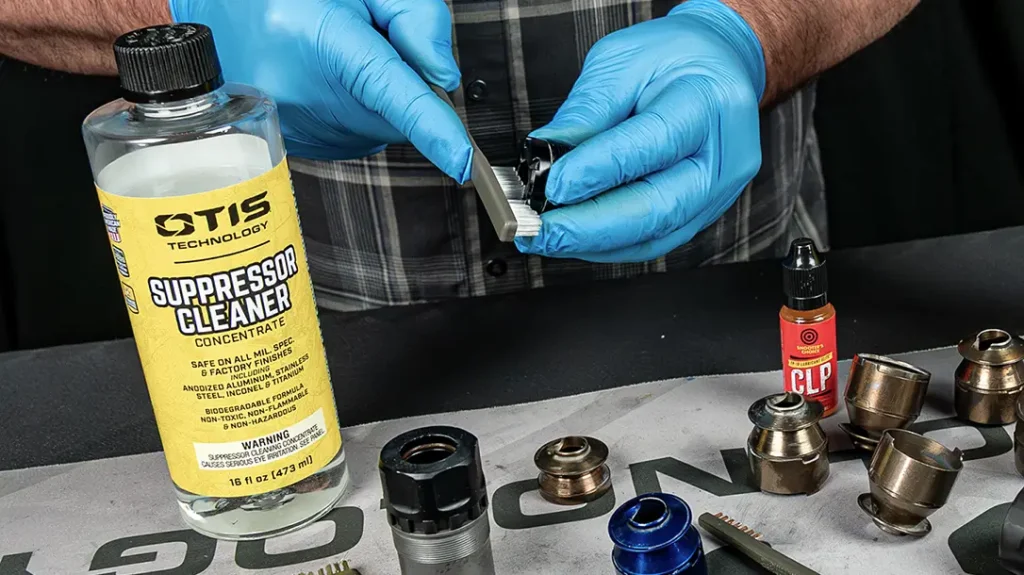There can be no denying the popularity of the 1911 pistol. Since its introduction, it has set the standard that all other combat handguns are judged by. Yet, in spite of its many positive aspects, for those who have to carry a pistol all day, it presents a significant problem—size.
Your average, full-sized, steel-framed 1911 is at least 8.5 inches long. And, when unloaded, it tips the scales in excess of 2 pounds. That is quite a chunk of metal to lug around on your belt or conceal under a jacket all day. Despite this, many hardcore aficionados would never think of carrying anything but a 1911-style pistol.
The primary reason for the 1911’s inconvenient dimensions and weight is the cartridge it was designed to fire. The .45 ACP is a B-I-G round, and thus the immutable laws of physics require a pistol of a certain size to launch it. Over the years, a number of manufacturers have offered “compact” 1911 pistols, but the process of “compacting” generally consisted of little more than hacking off sections of the slide and barrel and shortening the grip frame. While this has resulted in a shorter, lighter pistol, it has come at the cost of ergonomics, reliability and magazine capacity.
Advertisement — Continue Reading Below
Springfield Armory of Geneseo, Illinois, currently markets one of the most complete line of 1911s. It also responded to requests for a more compact 1911. Several years ago, the company released the Enhanced Micro Pistol (EMP), which was radically re-engineered specifically for concealed carry.
The Springfield EMP Series

To achieve this, the first thing Springfield’s engineers had to do was to discard that sacred icon of 1911dom: The .45 ACP cartridge. They chambered the new pistol for the 9mm. While we can hear all the wails of protest and gnashing of teeth out there, pay it no attention.
Advertisement — Continue Reading Below
Despite what the big-bullet crowd persists in believing, when loaded with high-performance hollow-point bullets, modern 9mm ammo no longer has to take a backseat to its larger-caliber cousins when it comes to on-target performance while providing the added benefits of less recoil and higher magazine capacity.
Using the 9mm cartridge was only the first of many changes that Springfield made. In fact, no fewer than 15 different components were redesigned to produce the EMP, including the slide, extractor, firing pin, firing pin spring, frame, trigger bow, trigger mechanism, plunger tube and spring.
Springfield EMP Features
Springfield fitted the pistol with a 3-inch barrel. It also added a correspondingly shorter stainless steel slide, which reduced its overall length to 6.6 inches. Springfield made the frame from black anodized aluminum alloy; this pared the EMP’s unloaded weight down to a mere 27 ounces unloaded—about the same as many snub-nosed revolvers.
Advertisement — Continue Reading Below
Due to it being designed around the 9mm cartridge, Springfield’s engineers were able to reduce the diameter and front-to-rear dimensions of the grip frame by 0.25 and 0.13 inches, respectively. Now, while this might not sound like much, when you pick up an EMP, this reduction is immediately evident, especially when you factor in the extra-thin grip panels.

The one downside to this was that EMPs could not accept standard 9mm 1911 magazines and instead required proprietary magazines. And, due to the popularity of the .40 S&W cartridge, Springfield soon began offering the EMP in this chambering.
Advertisement — Continue Reading Below
The ‘New’ 1911
In recent years, a “new” type of 1911 has become popular on the market; it’s one that is more concealable than traditional Commander-sized pistols, but has superior handling features to Officer’s Model-type pistols. To this end, Springfield’s 1911 stable includes Champion series pistols that feature full-sized grip frames and 4-inch barrels; they split the difference between the 3- and 4.25-inch barrels common to the aforementioned pistols.
The longer barrel/slide unit of the Springfield EMP 4“ Lightweight Champion provides a longer sight radius, a bit more recoil-dampening weight up front and extra velocity for improved performance from the 9mm cartridge; that’s all without increasing the size or mass of the pistol to any noticeable degree.
So it came as no surprise to me when, shortly before the 2017 SHOT Show, Springfield’s Debbie Williams asked if I’d like to test the company’s newest offering—the EMP 4“ Lightweight Champion with the Concealed Carry Contour. I’m just going to call the “CCC” for the sake of brevity.
Advertisement — Continue Reading Below
Seeing the Concealed Carry Contour
While dimensionally and mechanically similar to the EMP 4” Lightweight Champion, the CCC has a number of well-thought-out features that make it suitable for concealed carry. So let’s check them out.

The stainless steel slide sports a fiber-optic front sight and a low-mount, two-dot rear sight; both are also mounted in dovetail cuts. All of the slide’s edges have been radiused for two reasons: Firstly, for shooter comfort; and, secondly, to lessen the chances of it snagging when drawn from concealment. The ejection port has also been lowered and flared to ensure spent cases are reliably removed.
Advertisement — Continue Reading Below
- RELATED STORY: Fast & Furious – The Springfield XD-S in .40 S&W
Inside the slide we find a stainless steel, match-grade, bushing-less, fully supported, ramped, bull barrel. Meanwhile, dual captive recoil springs move on a full-length guide rod to ensure reliable operation and consistent lock-up with enhanced accuracy.
The forged aluminum alloy frame has a subdued black anodized finish that contracts attractively with the slide’s satin finish. An ambidextrous thumb safety makes the CCC a southpaw-friendly pistol. Meanwhile, the beavertail grip safety positions it properly in your hand while dispersing the recoil impulse for more comfortable shooting.
I was especially taken with how the aggressively checkered frontstrap and mainspring housing teamed up with the G10 Posi-Lock grip panels to ensure a firm purchase, even with perspiring or oily hands, and enhance recoil control. A nice touch was the beveled area on the left grip panel; it makes it easier to access the magazine release.
Advertisement — Continue Reading Below
The Housing

The Concealed Carry Contour’s most noticeable feature—and one that enhances its concealed-carry bona fides (and where the “Contour” in its moniker comes from)—is the aforementioned mainspring housing. It has received what is known as the “bobtail” treatment; here, the bottom corner of the mainspring housing and grip frame are cut away at an angle and beveled. The purpose of this treatment is to reduce the signature of the pistol when worn under light clothing.
Finally, the mouth of the magazine well has been slightly beveled to ensure smooth, snag-free reloads. And yes, the magazines fell free when the release was pressed—empty or partially loaded, slide forward or locked back.
Advertisement — Continue Reading Below
Trigger Time
With the able assistance of my wife, Becky, I ran the CCC through its paces one sunny December afternoon. Firing from an MTM K-Zone rest at 15 yards showed the CCC to be quite accurate with the ammo it liked. I was able to produce several sub-2-inch groups.
We then set up a trio of USPSA targets. After belting on the belt slide holster that came with the pistol, I set about performing a series of off-hand drills. As I am not a fan of white-dot sights, before starting I used a marker pen to blacken the dots on the rear sight.
The drills looked like this: At 5 yards, I drew the pistol from its holster. Then fired three rounds at each target with just one hand. Lastly, I reloaded and repeated the shots. At 10 yards, I drew the pistol and double-tapped each target. I fired with a two-handed grip before reloading and reengaging each target. I repeated this drill twice more. Finally, at 15 yards, I drew the pistol, engaged each target by firing three carefully aimed shots, reloaded and repeated.

During these drills, the Concealed Carry Contour handled beautifully. However, I found the narrow magazine well opening slowed my combat reloads down somewhat. I also experienced a single malfunction when one round of the steel-cased Winchester ammunition required a second strike to fire. The recoil, even with the +P rounds, was extremely controllable, enabling me to make fast, accurate follow-up shots.
Final Thoughts on the Springfield EMP
While I would like to be able to say that all of my rounds found their way into the A-zones of the targets, the sense of honesty that all gun writers possess forces me to admit that several of them wandered out into the C-zones. I have no idea how that happened. Honest!
All in all, I found Springfield’s Concealed Carry Contour to be an eminently practical concealed carry pistol. If you are a fan of the 1911 platform but want a smaller, lighter CCW handgun, you would be doing yourself a disservice if you did not check out the CCC. It’s just a damn nice little handgun! If that’s not to your liking, maybe the Springfield Hellcat is. For more even more info, visit springfield-armory.com.
























